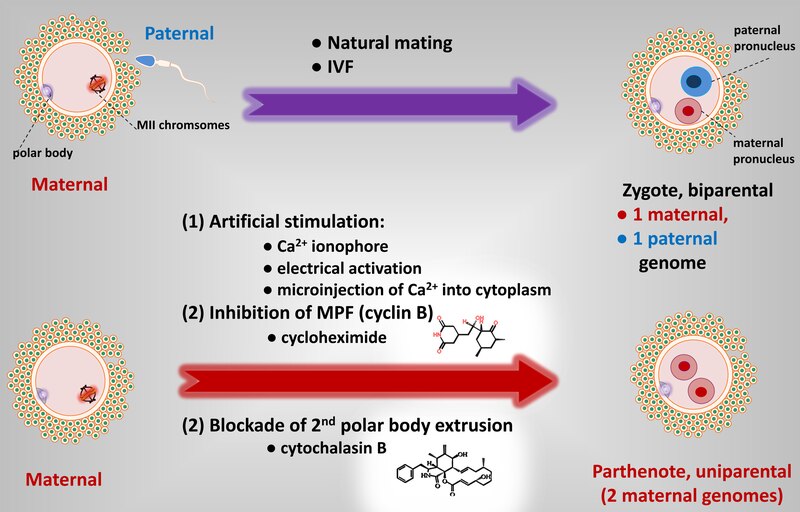English: Parthenogenetic development of swine oocytes. [(Bischoff et al., 2009), PMID: 19571260]. High metaphase promoting factor (MPF) activity causes mammalian oocytes to arrest at the metaphase II stage until fertilization by a sperm. The fertilization event causes intracellular calcium oscillations, and targeted degradation of cyclin B, a regulatory subunit of MPF, thus permitting the MII-arrested oocyte to proceed through meiosis.
To initiate parthenogenesis of swine oocytes, various methods exist to induce an artificial activation that mimics sperm entry, such as calcium ionophore treatment, microinjection of calcium ions, or electrical stimulation. Treatment with cycloheximide, a non-specific protein synthesis inhibitor, enhances parthenote development in swine presumably by continual inhibition of MPF/cyclin B [(Mori et al., 2008), PMID: 18635923]. As meiosis proceeds, extrusion of the second polar is blocked by exposure to cytochalasin B. This treatment results in a diploid (2 maternal genomes) parthenote.
Bischoff, S. R., Tsai, S., Hardison, N., Motsinger-Reif, A. A., Freking, B. A., Nonneman, D., Rohrer, G. and Piedrahita, J. A. (2009) Characterization of conserved and nonconserved imprinted genes in swine. Biol Reprod, 81, 906-920.
Mori, H., Mizobe, Y., Inoue, S., Uenohara, A., Takeda, M., Yoshida, M. and Miyoshi, K. (2008) Effects of cycloheximide on parthenogenetic development of pig oocytes activated by ultrasound treatment. J Reprod Dev, 54, 364-369.



